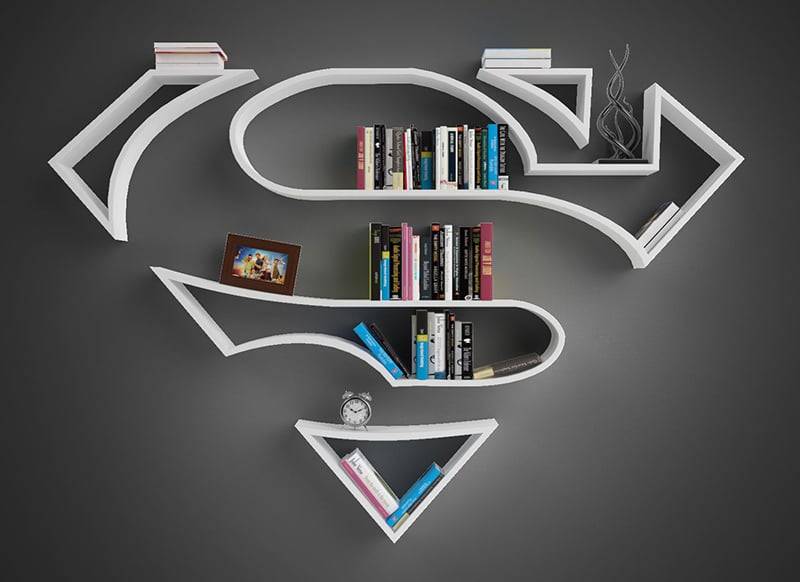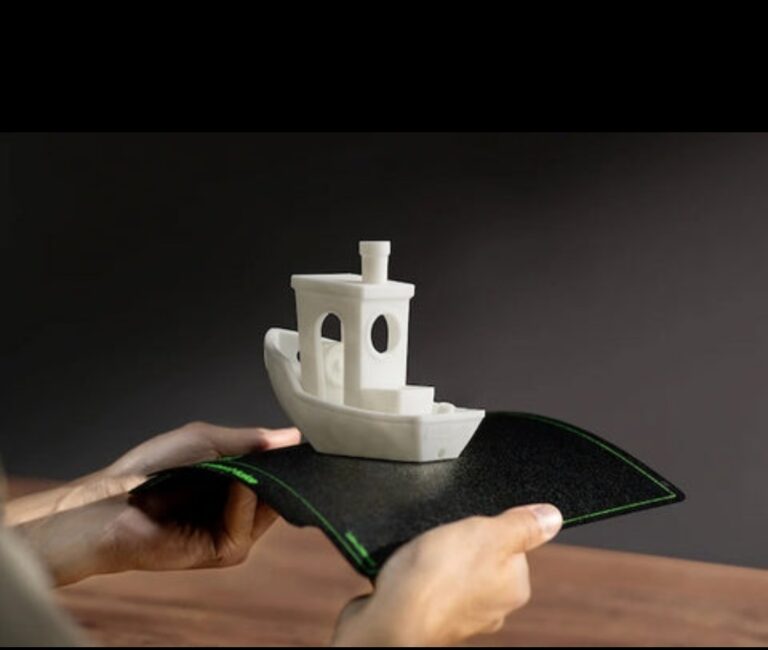3D printing has really improved over the years so if you are asking ‘can you 3d print clear plastic?’ The answer is yes, 3D printing provides unmatched freedom when it comes to appearances of objects printed.
It allows for color change, texture, size, and shape alterations on your print, just by changing what material you use. There is need for clear parts printing otherwise called transparency, sometimes just for aesthetic purposes. But, is it possible to 3D print clear plastic?
The answer is yes, and this usually require some extra work to achieve a perfectly transparent print.
In order to understand why that is, we should talk about what we mean when we use the words transparent and translucent.
What is the difference between a transparent print and a translucent one?
When it comes to 3D printing, the terms transparent and translucent are often times conflicting. So, the need for clarity – transparent print refer to any material that allows almost all visible light to pass through it.
While, translucent simply allows some light to pass through and most times look scantily clear, any material that lets no light through it whatsoever is called opaque.
Most of the time, when you try to 3D print using a transparent filament, typically using an FFF printer, your prints may look unclear.
Most usually because of your settings, you may probably still see some light pass through them, but they will be translucent at best.
This is because a 3D print is made up of lots of layers of material piled on each other.
The small gaps and irregularities between these layers refract and scatter light, prevents it from passing through. But, this can both be reduced and eliminated.
How do you print clear parts?
To get the best clear parts, there are three important aspects to keep in mind:
- The material
- Slicer settings
- Post-processing.
Materials
When it comes to printing clear parts in 3D, be it translucent or transparent parts, there are two very different material categories you should use.
The first is thermoplastics when using an FFF printer. The next is resins using an SLA or PolyJet/MultiJet printer. Though these printer can be astronomically expensive than the FFF printers.
Note: Resin and resin-based printing technologies, though expensive will give you the most transparent parts. However, getting good prints with resin can be very difficult.
Thermoplastics have the advantage of easy access, requiring less cleanup, and coming in a wide range of options.
Some of the FFF materials that can be printed transparent are:
PLA
PLA is perhaps the commonest, cheapest and most used FFF materials. You can easily find transparent PLA, when it first came onto the market, most PLA was transparent. However, getting clear prints with PLA is a different ball game altogether.
CPE/CPE+
For CPE and CPE+ materials, they can be found in transparent varieties and CPE+, in particular, is ideal for transparent printing as it can be more easily post-processed with heat treatment due to its higher heat resistance.
It does possess good mechanical properties too which makes it a good option for functional parts.
PETG
PETG is a material type for translucent printing that helps you skip post-processing. Transparent PETG is easy to find and it prints quite impressively than transparent versions of PLA and ABS will. Post-processing is still necessary to achieve a transparent final print.
PP
Polyproylene is one of various materials with transparent filament options. PP is also more expensive than other options but it has some specific mechanical properties that the other materials mentioned don’t have, making it appropriate for certain functional parts and you can achieve translucent prints with it.
ABS
ABS like PLA is common, affordable, and comes in transparent varieties. The con of ABS is that it’s a more difficult material to print than PLA and PETG.
It requires an enclosed printer and similar to PLA, the prints you get off the build plate are unlikely to be particularly transparent.
A pro of ABS is that it can be vapor smoothed using acetone.
Which settings is used to print clear plastic?
Slicer setting are necessary to be tuned appropriately when your aim is printing clear parts.
Different materials and printers have different requirements but below are some of the general settings you should pay rapt attention to. They are:
Infill percentage
There are two options for infill percentages (100% or 0% – for any infill pattern except lightning). 100% infill percentage will create clear solid objects and is the best option for functional parts.
However, for large parts, the amount of filament used will be high. The alternative is to use no infill or 0% and a wall that is a single line thick.
That will create a hollow object with very little material to displace light passing through it. The con of this, is that, many objects will not be able to be printed without infill. Using any other infill percentage will create complex internal structures that will reflect light and make the print less transparent.
Spiralize outer contour (vase mode)
Spiralize outer contour is a setting that is necessary to enable a smooth print of objects with a single wall thickness.
It turns the print into one continuous print path void of any retractions between layers and therefore no Z seam. This will be perfect when making thin translucent parts like a lampshade.
Layer height
Changing your layer height will change the degree of translucent parts you achieve. Low layer heights create smaller gaps between layers which creates clearer parts. This is basically the only setting that is also relevant to resin printing.
As with FFF, a lower layer height is usually best. But, there is one exception when larger layers are better, which is, when using vase mode with a single line thick wall.
In that case, larger layers and even a larger nozzle size will most likely result in a clearer part.
Temperature
Temperature settings can have an effect on clarity. A higher temp will help your layers fuse more completely resulting in more clarity but too high temperature can cause your material to bubble or burn as it leaves the nozzle resulting in a rather translucent part.
Post-processing a 3D print

Post-processing is the magic final lapse of 3d printing, that, in the right circumstances, can turn a cloudy uninviting print into one that’s crystal clear and captivating.
Below are few post-processing approaches and techniques you can use for a difference:
Sanding and polishing
Sanding and polishing is one of the most Straightforward post-processing technique to smoothen out the layer lines that stop a print from being transparent.
However, you will need to use an extremely fine grit of sandpaper as well as polish to get a perfectly smooth surface.
This technique also get harder on parts with complex geometries. It’s also best to wet sand PLA or any material with a low thermal resistance to prevent the heat created when sanding from damaging the part.
Clear coating
Clear coating a 3D print can be bring about transformation. A clear coat is a transparent layer of paint that, when applied, penetrates into the layer lines, filling them up and giving the part a smooth finish.
If your settings were all properly done, and you used the appropriate material, a clear coat can be the difference between a translucent part, and a transparent one.
Vapor smoothing
Vapor smoothing is the process of using either acetone (for ABS) or isopropyl alcohol (for PVB) to ‘melt’ the outer layer of a print by smoothing out the layer lines that prevent a print from being transparent.
Vapor smoothing can be a tedious process to get right as overexposing a part can cause the part total melting.
With practice, this can be a great technique for improving the transparency of your parts.
Note: Vapor smoothing can be dangerous (especially when using acetone) so it should only be done in a controlled environment and when using the appropriate safety precautions.
Temperature treatment
It is possible to fuse the layer lines of a print by exposing the outer surface of the print to heat.
The principle is similar to vapor smoothing only that, using heat instead of a chemical reaction to melt the surface of the model. This can be done with a heat gun and works particularly well with temperature-resistant materials like PETG and CPE+.
Applications for 3D printing clear plastic
The uses you can find for clear 3D printed parts are limited only by one’s imagination. There are several possibilities. Such as:
Scientific Research
Custom transparent parts have various uses for scientific research. It enables scientists a more ideal form of study and supports better researches.
Visual prototypes
Visual prototypes is a vital part of the rapid prototyping process and the more accurate they are, they more useful, they will be.
Hence, printing a product with transparent parts, and having them look exactly how you want them to, can be invaluable.
Art projects
3D printed transparent and translucent parts is capable of opening up a whole new world of artistic freedom. A typical example is lithophanes, characterized by varying the thickness of an object so that when a light shines on it, it reveals an image.
Household Decorations
With transparent 3D print, you get to spice up your home with even more fancy new figurines, vases etc. With 3D printed transparent parts, you can decorate your home to taste, with parts that not only look good, but are also functional.

